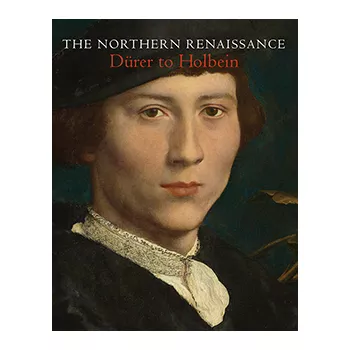The Sea Monster c.1498
Engraving | 25.1 x 18.8 cm (sheet of paper) | RCIN 800080

Albrecht Dürer (1471-1528)
The Sea Monster c.1498
-
An engraving showing a woman being abducted by a sea monster.
This strange scene is one of Dürer's most enigmatic prints. The clue to its understanding appears to lie not in the foreground figures, but in the group in the left background, who demonstrate their anguish at the unfolding event. This is an abduction rather than an elopement. That the reclining woman is a member of the group of nude women, who have been bathing, is indicated by her backwards glance and lack of interest in the merman (a bearded man with a fish’s tail and a moose’s horn) who grips her arm. The man running towards the shoreline is well dressed, and she, although naked, wears an elaborate jewelled headdress, indicative of wealth and status. The woman here is a prized asset rather than a romantic heroine or model of piety.
Beyond these general remarks, however, no literary or mythological source has been firmly identified. Dürer himself called it only the ‘sea monster’ in his diary of his trip to the Netherlands. It may be that, although he took various myths of marine abduction as his starting point, Dürer was not concerned to tell a specific story here, merely to explore the pictorial potential of such a scene. A number of Dürer’s compositions at this time are concerned with the naked female form, among them the Pupila Augusta of c.1498, the Four Naked Women, dated 1497, and the Hercules at the Crossroads of around 1498. The Sea Monster can thus be seen, partly, as a study of a reclining nude. The fleeing women on the shore are related to a similarly agitated group in Dürer’s sheet of studies of the Rape of Europa of the 1490s (Albertina, Vienna). Naked women riding mermen (who, like the sea monster, brandish bones as weapons) were depicted in a print by Andrea Mantegna, copied in pen and ink by Dürer in 1494 (Albertina, Vienna).
Catalogue entry adapted from The Northern Renaissance. Dürer to Holbein, London 2011Provenance
In the Royal Collection by c.1810
-
Creator(s)
(engraver) -
Medium and techniques
Engraving
Measurements
25.1 x 18.8 cm (sheet of paper)
Category
Object type(s)









